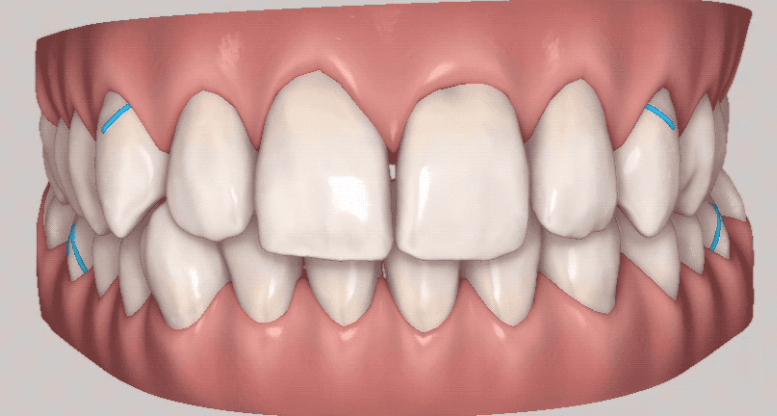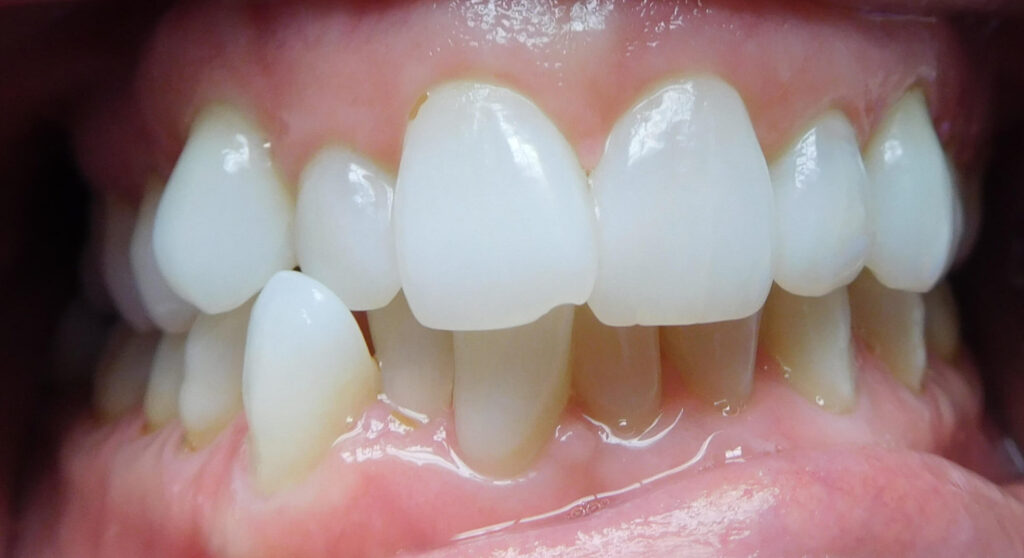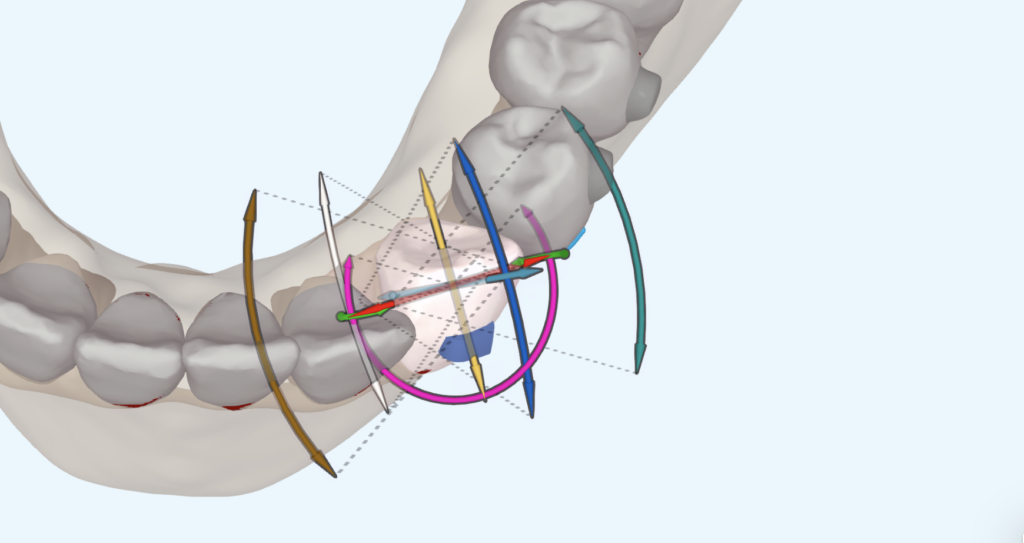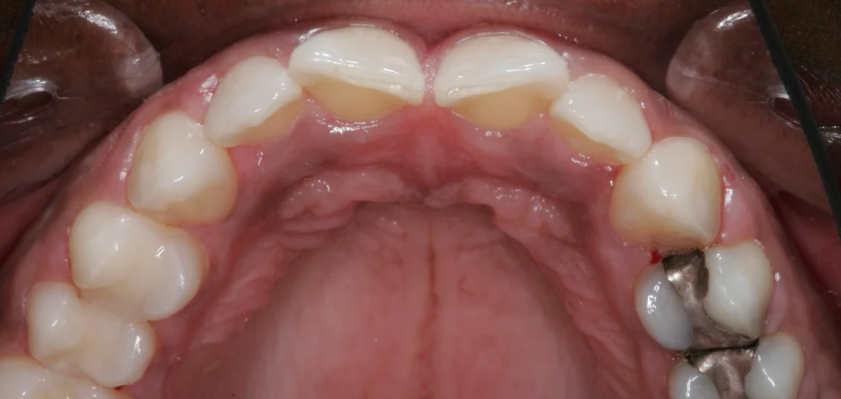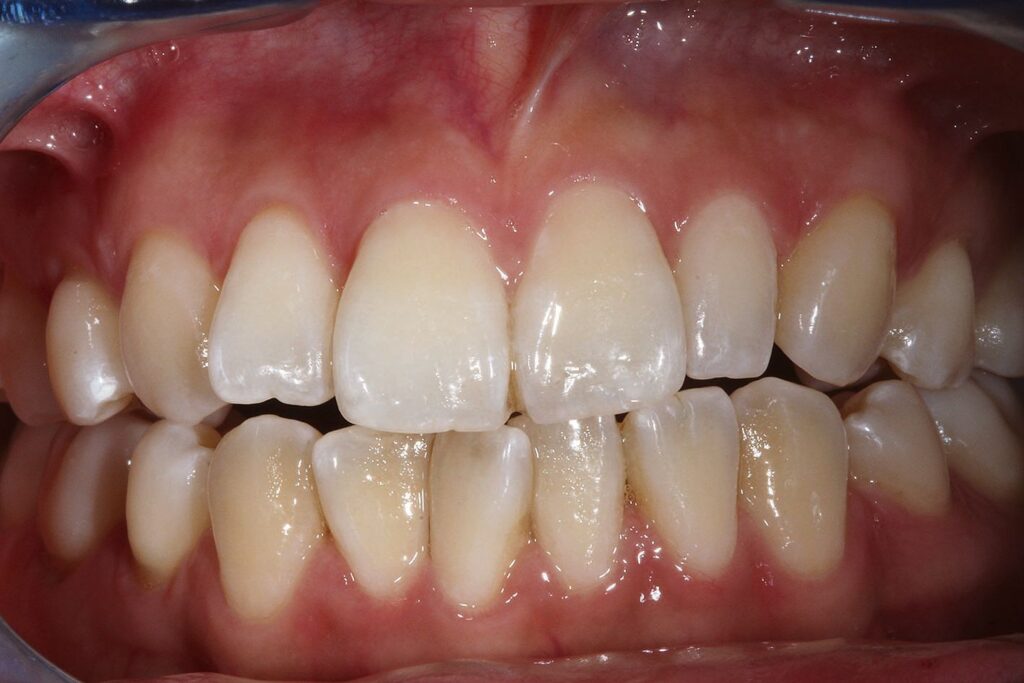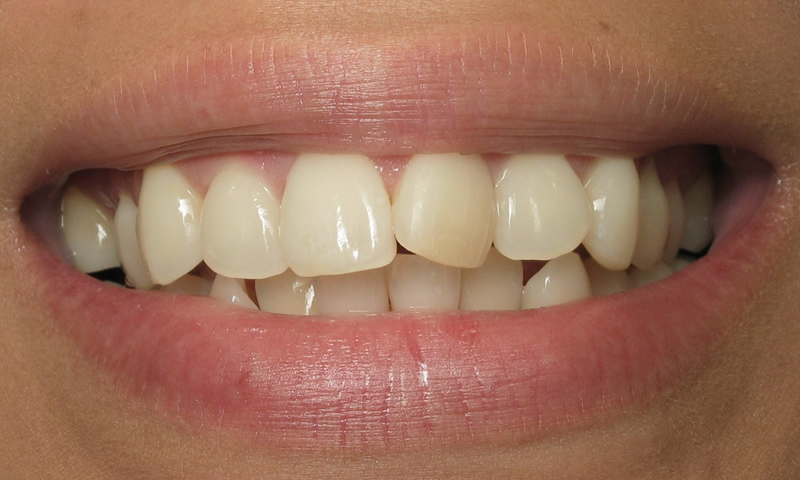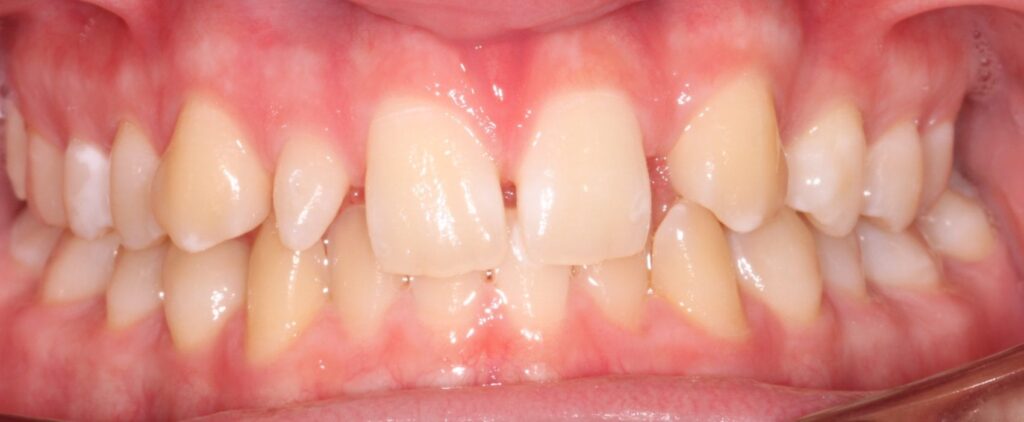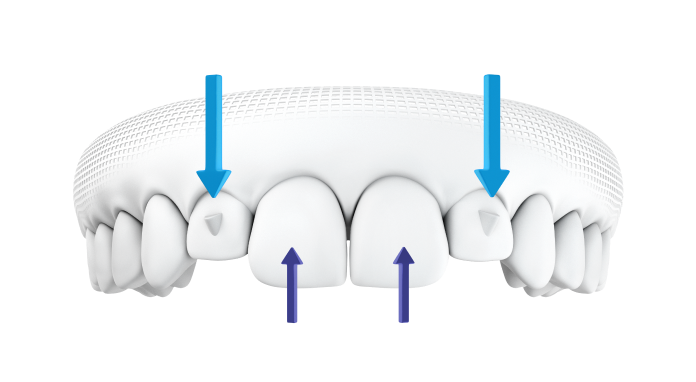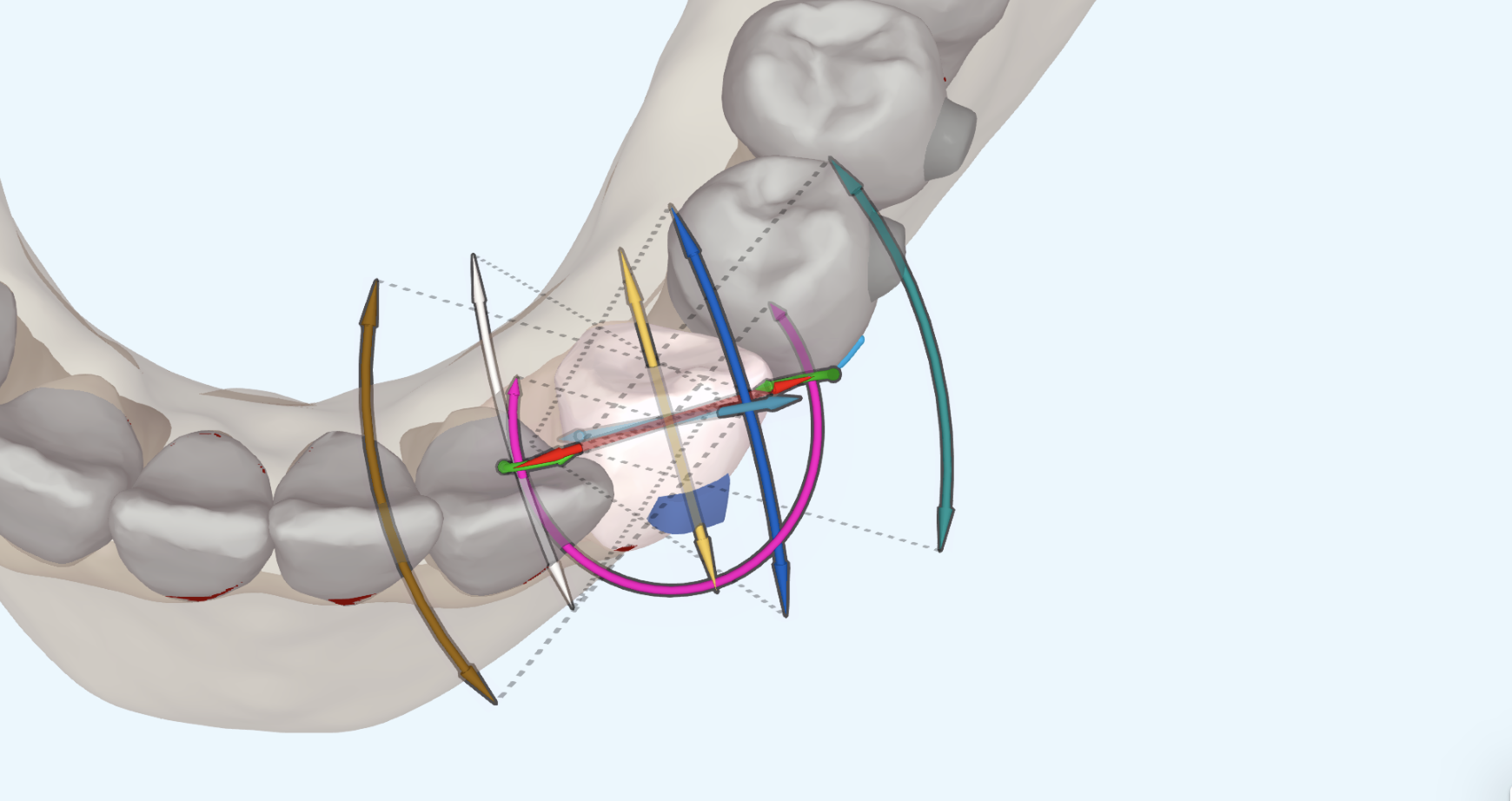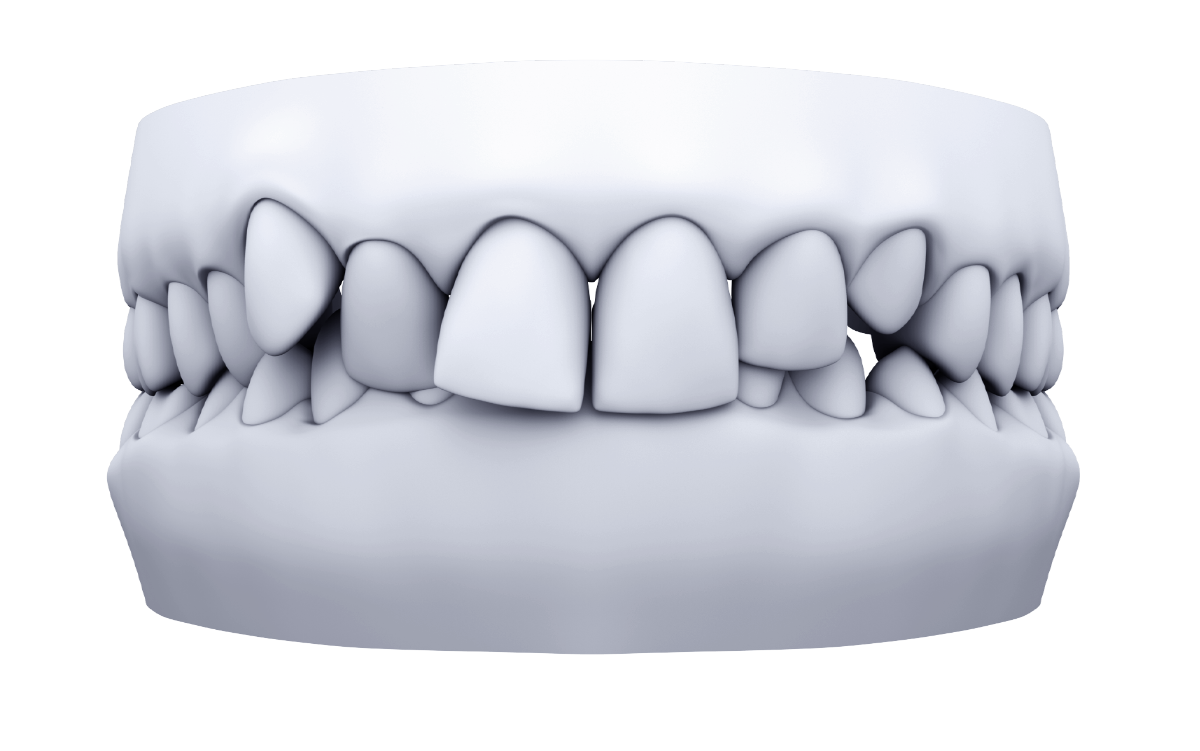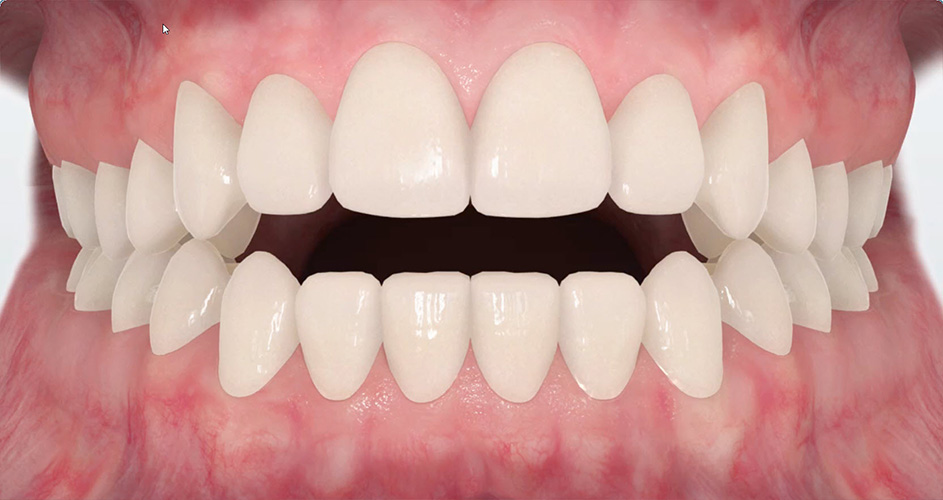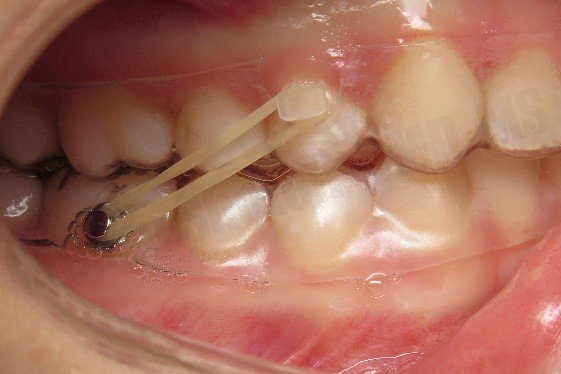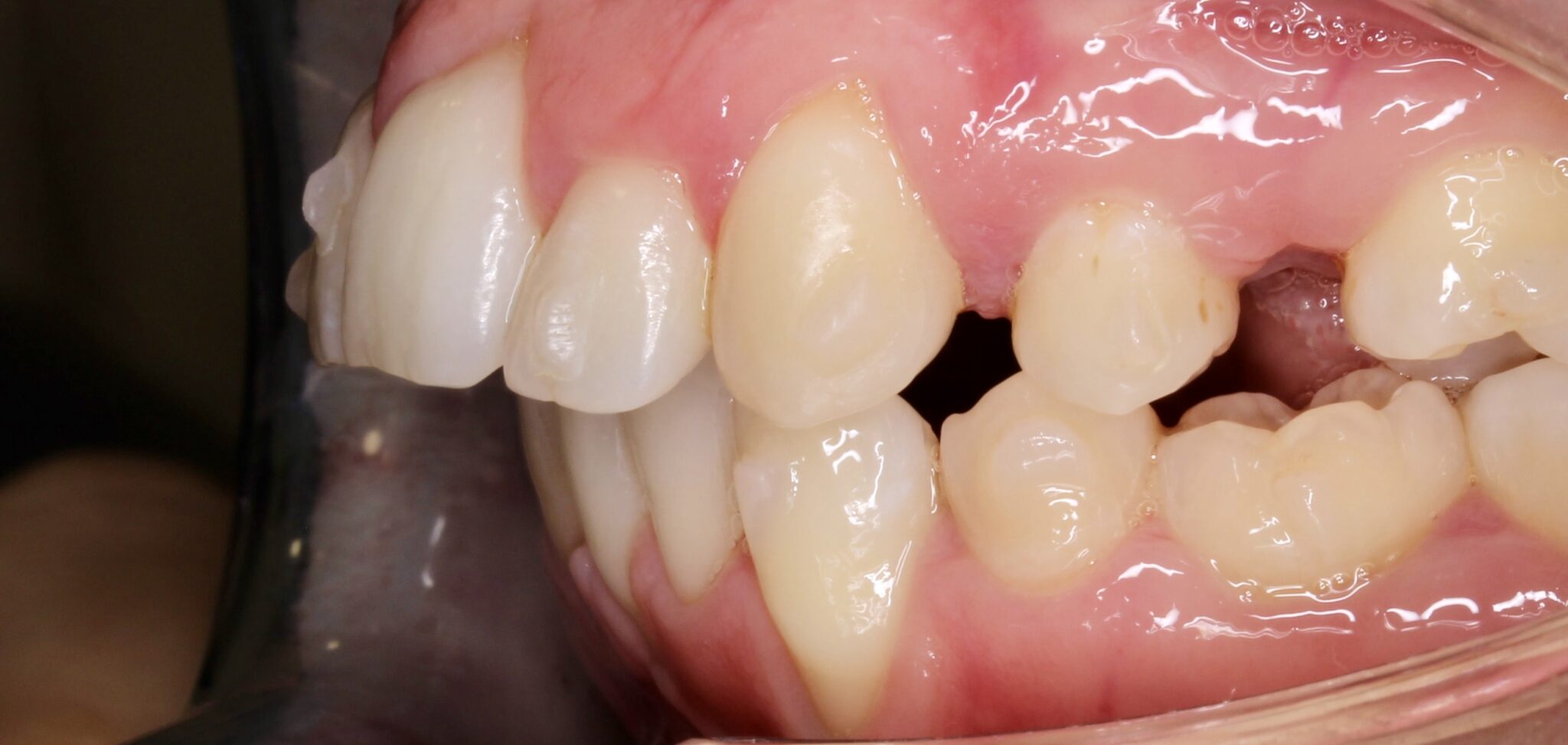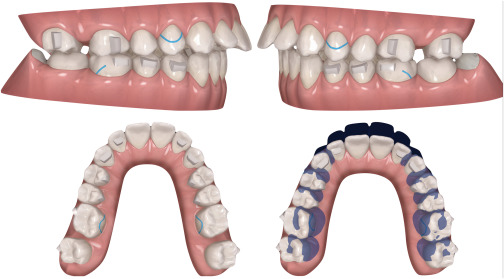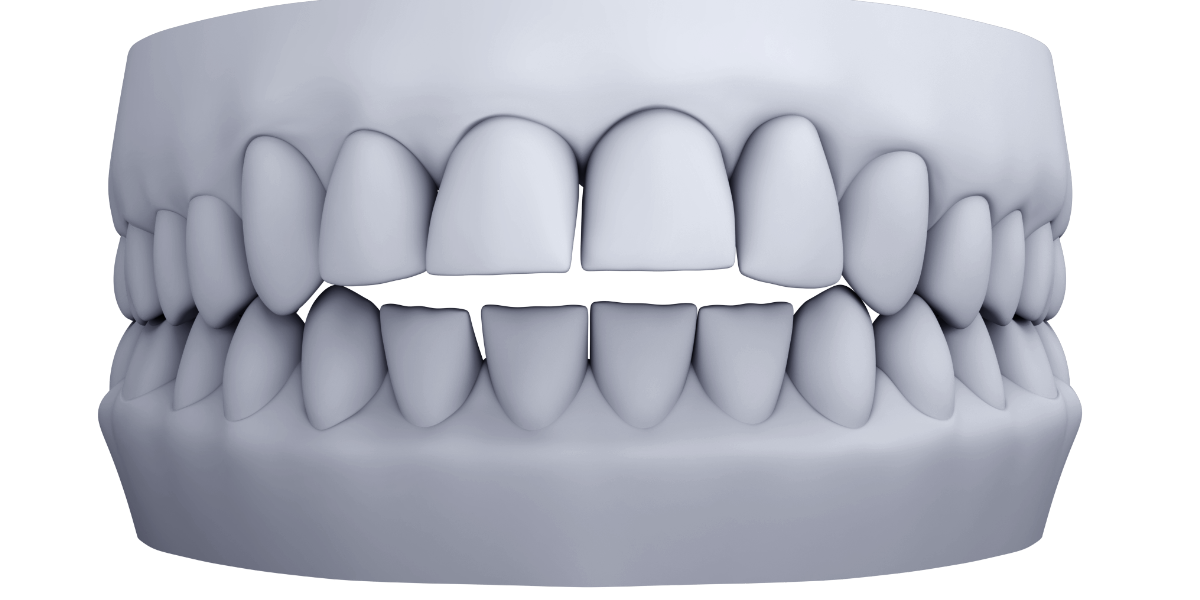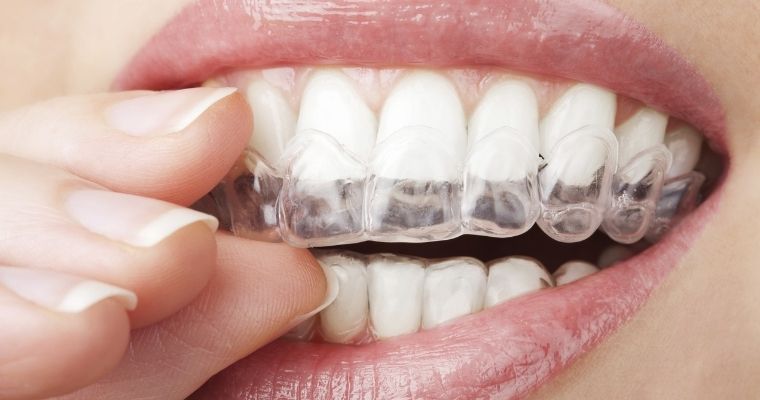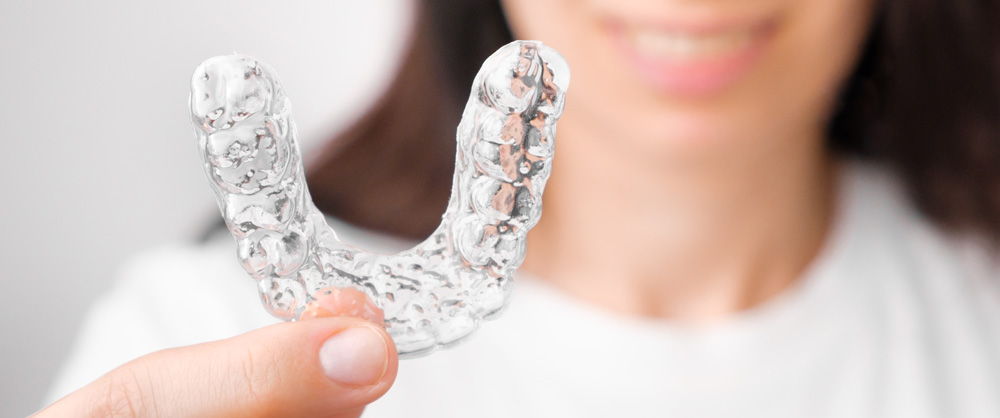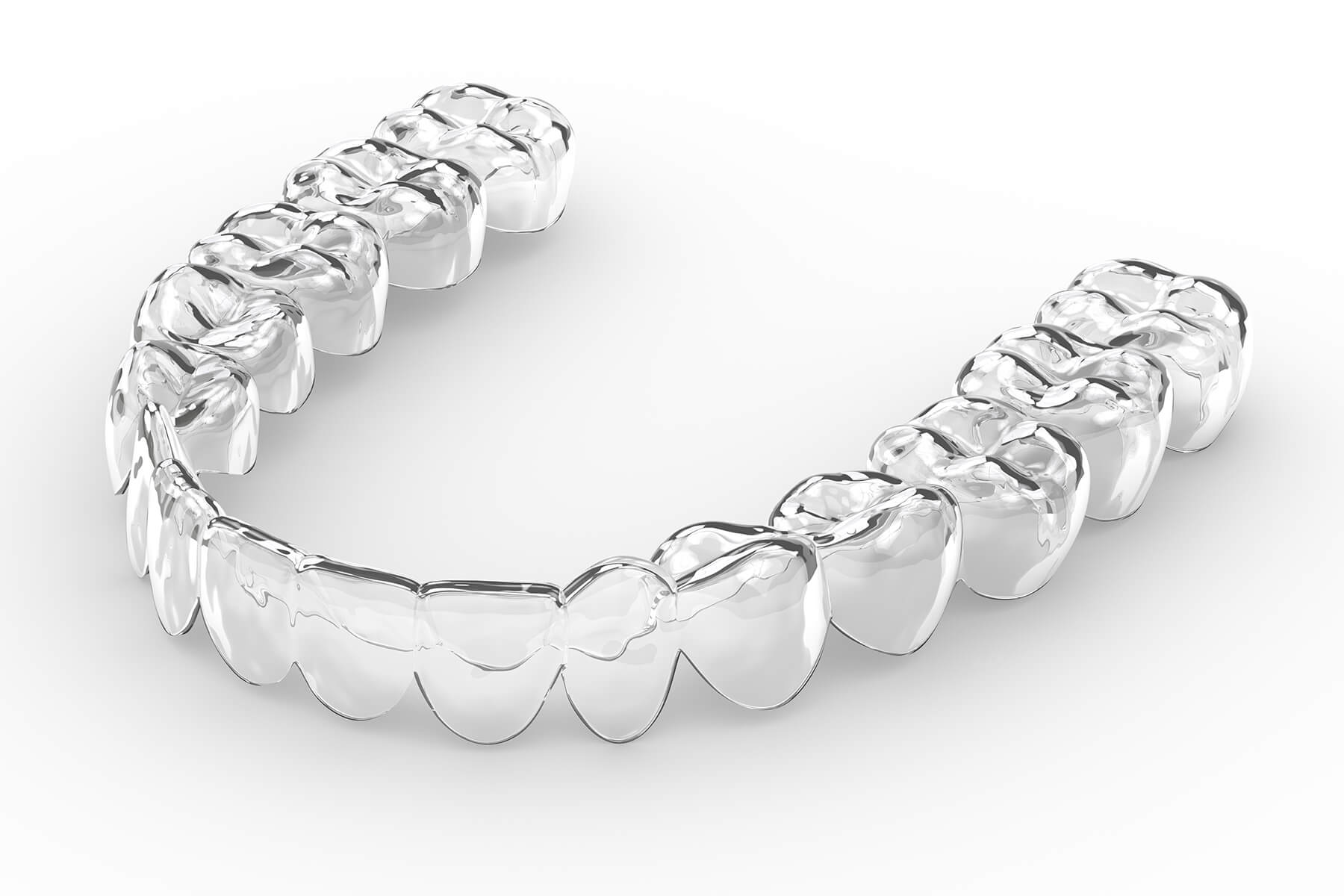Rotating canines with aligners
Rotating canines and Class II correction Attachment placement on rotated canine
Overcorrections
It is a good strategy related to overcorrections of some isolated movements, such as rotations or intrusions, is to ask that the movement is done normally during the aligner sequence, but the overcorrection to be done alone, at the end of the sequence. This way, if…
Anterior tooth rotation
Rotated anterior tooth: Clincheck instruction requesting Hinge Axis rotations: “Please correct anterior rotations with hinge-type movements. Create an axis for rotation (hinge) on the mesial or distal of the tooth. It is OK to move the hinge buccal to create spacing but perform ALL the…
Upper lateral incisor
Attachment recommended for rotated lateral incisor: Attachments design for rotation mesial in: Horizontal rectangular attachment 4 mm long, 1.5 mm height, 1.25 mm thick on the incisal margin tapering into the crown on the gingivalmargin, and rotate the whole attachment 45 degrees so it goes…
Root torque
Upper teeth palatal root torque. Attachments Prescribe the desired palatal root torque, but I ask my technician to delete the power ridges and add 3 mm wide gingivally beveled rectangular attachments to keep the aligners fully engaged on the teeth. Retroclined upper incisors Add an…
Root tipping
Tipping 11 (movement staging):*First procline +rotate mesial-out*Second: 10-degree tip mesial of the crown + intrusion+ rotate distal-inWhenever there is rotation + tip, do not start correcting the tipping Root tip attachment: vertical beveled (bevel on a different side than root tipping is needed). Diastema closure…
Canine distalisation (to open space for a lateral incisor)
If the canine requires distalization, mesiodistal root tipping, and torque control, then a good suggestion is: The control of all those movements can be achieved with the use of rectangular and vertical attachments. Implant placement With today’s implant technology, assuming a 3.25-mm lateral incisor implant…

